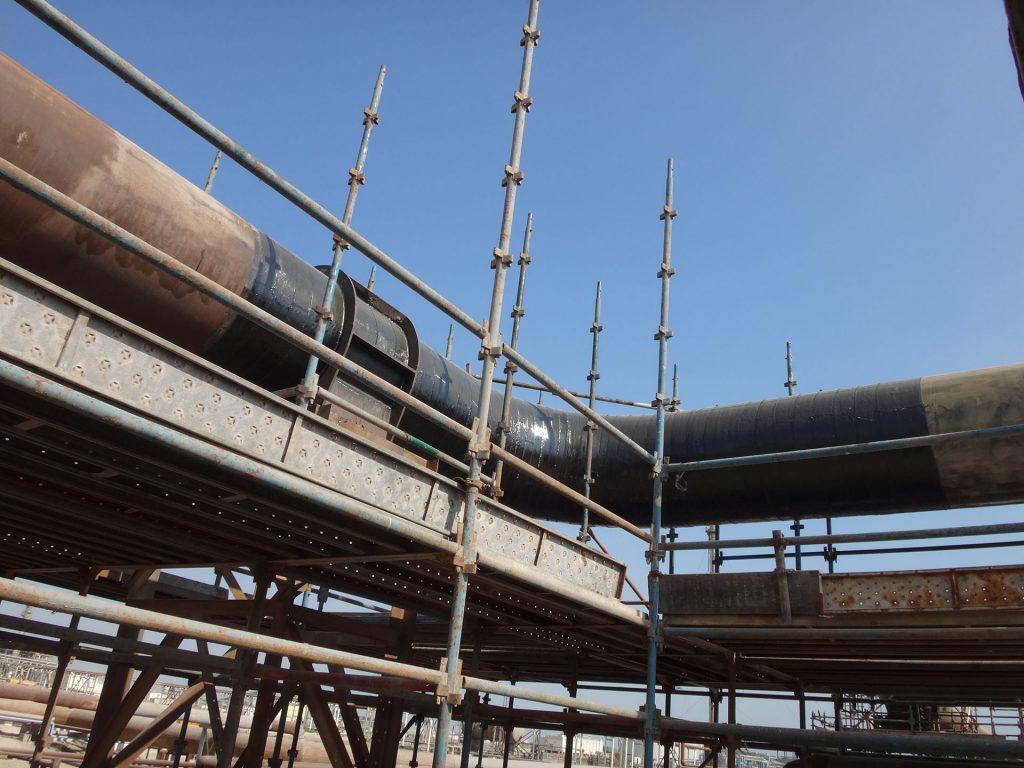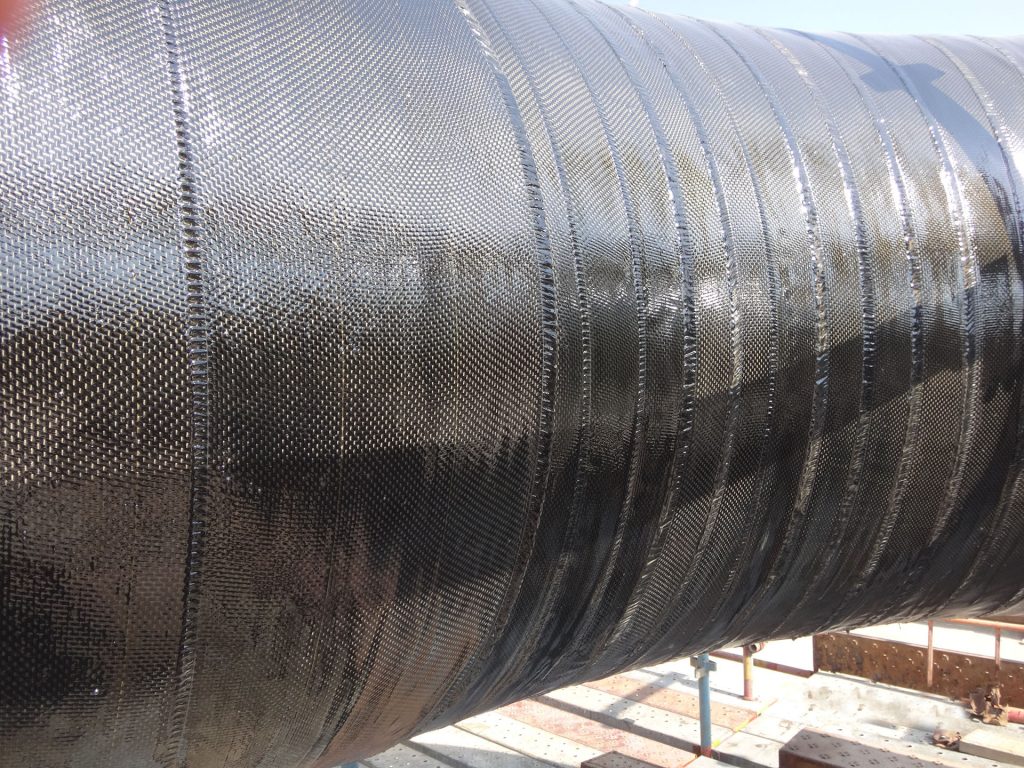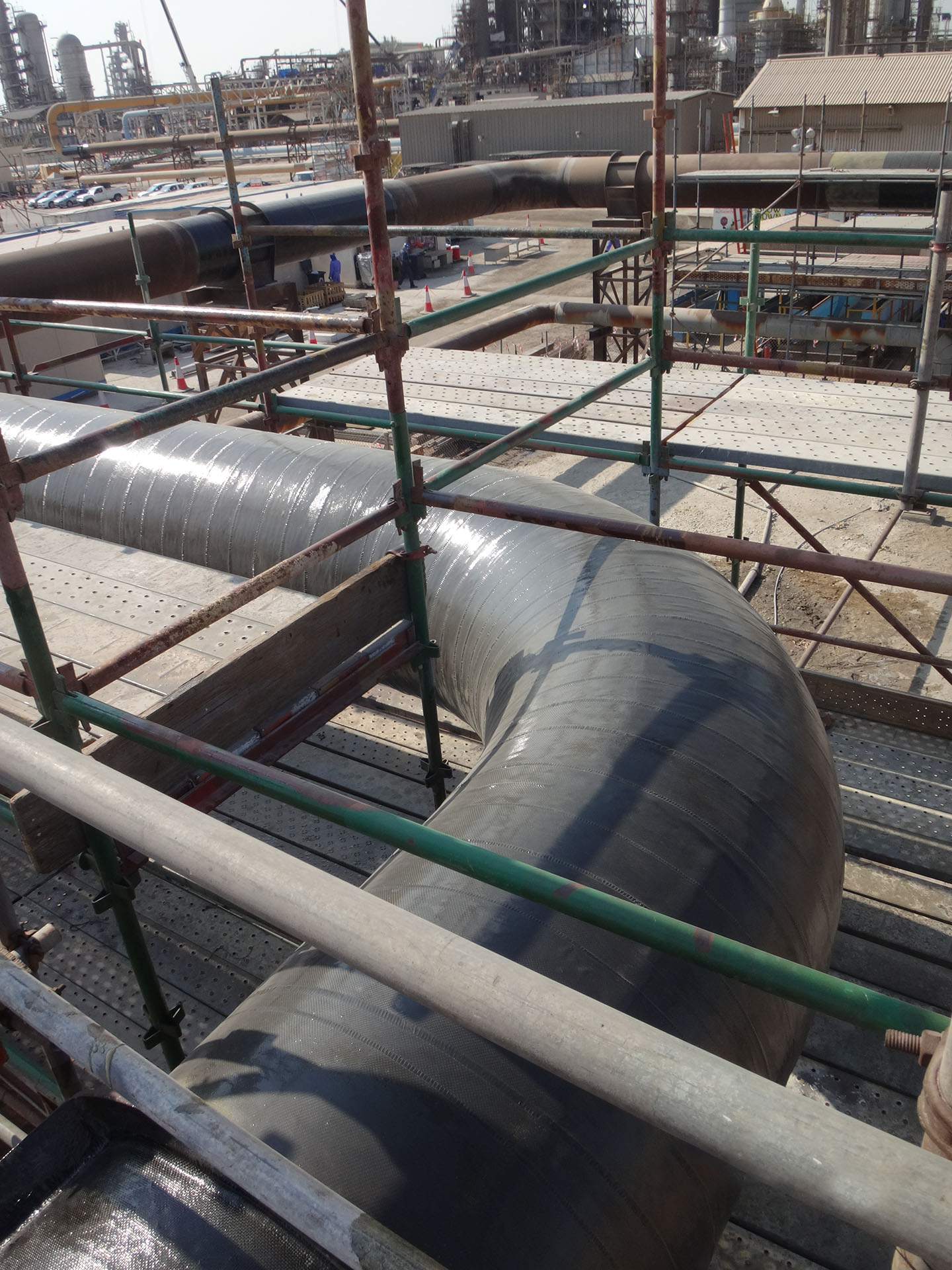Bahrain
Pipe Details
- 42-inch (1,067-mm) gas pipeline had suffered from corrosion over a length of 100 ft (30.5 m)
- 113º F (45º C) ambient environment
- Pipe on supports 26.2 ft (8 m) above ground level
Summary
- Internal corrosion caused a leak in a 42-inch (1,067-mm) flare line carrying aggressive gases at a Middle East refinery
- The damaged line had to be accessed using scaffolding, with repairs carried out in temperatures exceeding 45ºC (113ºF)
- DiamondWrap® with HTA epoxy, a carbon fiber system, restored the line to safety
- With the oversight of a CSNRI supervisor, 24 trained and certified technicians from local distributor MCSC WLL completed the repair in 51 days
- No hot work was required for the repair
- The installation was executed without taking the line out of service, saving considerable cost an inconvenience to the refinery owner
When internal corrosion caused a leak in a 42-inch (1,067-mm) flare line carrying aggressive gases at a refinery in the Middle East, the owner began looking for a composite solution that would be suitable for a demanding ambient environment of 45º C (113º F). Corrosion had damaged 100 ft (30.5 m) of line, and a fast resolution was needed to restore integrity.
Having worked with CSNRI in the past, the owner turned to the company again, requesting a high-temperature carbon fiber epoxy-based solution. The intent was to use the composite to restore the damaged pipeline to its original integrity and to extend its functional working life.
Engineers evaluated the damage and developed a repair using DiamondWrap® with HTA epoxy. The system uses a bidirectional weave of carbon fiber and a 100% solids epoxy that form a composite system that is stronger than steel.

The structural system forms a pipe around a pipe, with each successive wrap increasing the pressure rating. The bidirectional weave allows for strength in both the hoop and axial directions, minimizing creep and ensuring that there is no reduction in strength over time. The high corrosion resistance of this composite system made it the perfect solution for this repair.
Deploying a CSNRI supervisor and a team of 24 trained and certified technicians provided by local distributor MCSC WLL, the project got under way.
A scaffold was erected to allow the team access to the damaged pipe, which was on supports 8 meters (26.2 ft) above the ground. Working from the scaffold, the team prepared the line and began wrapping the damaged area, covering the entire surface with two layers of carbon fiber affixed with HTA epoxy over a 51-day period. Despite being installed in a very hot environment where temperatures exceeded 45º C (113º F), the composite system cured perfectly, restoring the line to safe operations, meeting the project schedule without introducing hot work or other additional hazards to the work site and with no negative environmental consequences.
The facility remained in operation throughout the repair, allowing this solution to be carried out at approximately 20% of the cost of shutting down the line.



